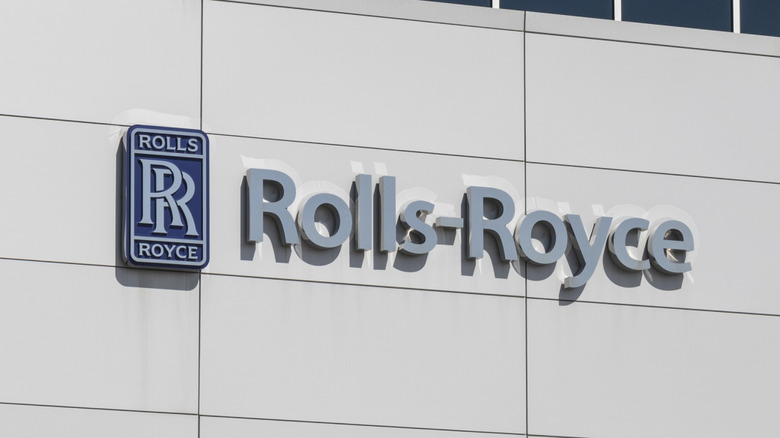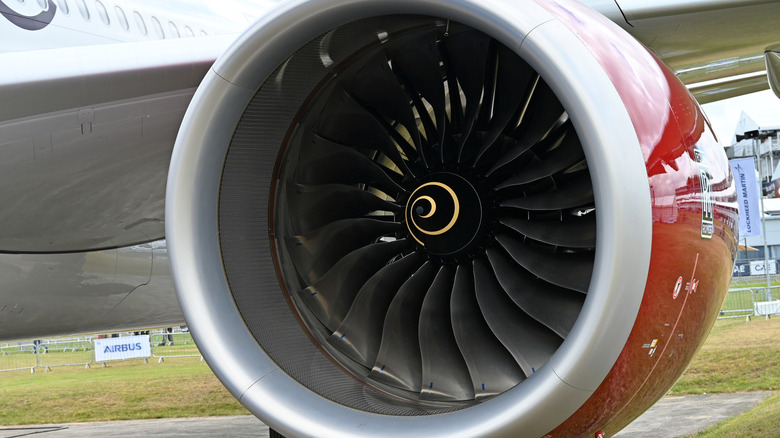Does The Rolls-Royce Car Brand Also Make The Rolls-Royce Airplane Engines?
With the meeting of Charles Rolls and Sir Henry Royce in the early 1900s, the seeds were planted for one of the most famous luxury car brands in history: Rolls-Royce. In the century since the brand came into existence, it has cranked out remarkable high-end rides on a consistent basis. In fact, it is responsible for some of the most expensive cars of all time. Of course, while Rolls-Royce has cemented its legacy as the textbook definition of a pricey car brand, it has expanded its horizons into other fields of transportation technology, like air travel. However, the Rolls-Royce responsible for creating luxury cars is a separate entity from the Rolls-Royce behind airplane engines.
Rolls-Royce filed for bankruptcy in 1971, resulting in it splitting into the car-focused Rolls-Royce Motor Holdings Limited and Rolls-Royce Limited (sometimes referred to as Rolls-Royce plc or just Rolls-Royce Holdings), of jet engine fame. The company, now called Rolls-Royce Ltd., has been involved in plane engine construction since World War I, first coming up with the Rolls-Royce Eagle engine for the British military in 1915. All these years later, Rolls-Royce Ltd. has very much remained committed to its air travel efforts. It's now regarded as the second-largest airplane engine manufacturer in the world, behind GE Aerospace alone. It has even made some of the most revolutionary engines that changed aviation forever.
At this point, Rolls-Royce Ltd. has a few key engines under its belt that power some of the world's most well-known planes.
Rolls-Royce is responsible for some impressive engines
As the Rolls-Royce Eagle has receded further into history, the company behind it has moved on. In doing so, it has introduced a few notable airplane engines to the marketplace, moving travelers through extended trips quickly and efficiently. Long after the end of World War I and World War II, Rolls-Royce's RB211 line of engines burst onto the scene in the early 1970s. With 42,000 lbs of thrust behind it, the original made a name for itself, powering the Lockheed L-1011 TriStar and some Boeing 747 Transport units as well. Naturally, the RB211 later spawned variations to keep up with the times. Nowadays, the RB211 remains a widely used engine in the modern era, as seen on Boeing's 757, which is powered by the RB211-535E4.
A more recent innovation compared to the RB211, the Rolls-Royce Trent engine series came to fruition in 1990. The Airbus A330-designed Trent 700 quickly impressed with a thrust of up to 72,000 lbs and commitment to the line's the overall line's mandate of reducing pollution without compromising on cost. As a result, it has become one of Rolls-Royce's most prominent engines, powering planes like the aforementioned A330, the Airbus A350 XWB, and the Boeing 787 Dreamliner– one of the best jets Boeing has ever made — to name a few. Much like the RB211, the Trent has undergone several transformations throughout the years, with the most recent as of publication being the Trent 1000 and the Trent XWB.
Though they may not be one and the same these days, the car and plane engine-focused Rolls-Royces are undeniably determined to remain on the cutting-edge of the technology behind their respective forms of travel.

